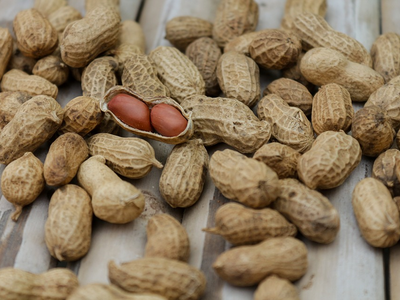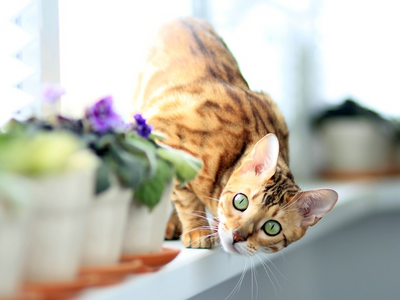11.02.2022
How to get a cat to lose weight—Untamed answers your questions
There is a significant difference between a chubby and an obese cat. Depending on the breed of your feline, it might be difficult to spot the difference right away. Once you realise that your furry friend has gained a lot of weight, two questions arise:
- What diet should I put my kitty on?
- How much should they eat when they’re overweight?
Untamed tackles all the hot topics related to feline weight issues— how to measure the body weight, figure out the ideal size of your cat, find the best food, and deal with the accompanying health risks. We’ll present the best food you can get to help your cat lose weight and keep them in excellent shape throughout their life.
How to know whether your cat is obese
Cats are considered overweight when they’re 15% over the ideal weight. Once they get above 30%, they are, unfortunately, obese. If you aren’t sure whether your cat is overweight or obese, follow the steps below to find out:
- Feel your feline companion’s ribs when stroking them. If you are unable to find the ribs easily, your cat is probably overweight
- Repeat the same procedure with their spine. If you cannot find the bones below a layer of fat, it might be a sign of obesity
- Observe your cat from the side. If you notice a layer of low hanging fat, your cat has started to gain excessive weight
- Look at your cat’s waist. If you can’t see it, it’s time for a diet
How to weigh your kitty
Your feline companion probably won’t stay still when you try to put them on a scale. There are simple ways to weigh your kitty even if they keep fidgeting:
- Start by weighing yourself on a digital scale. Write down your weight. Pick up your kitty and weigh yourself and your cat together. Write down the result. Subtract the first number from the second, and you'll get your cat's weight
- If your cat doesn’t like to be held, there is another way to weigh them. Put a box or a carrier on a scale. Write down the result. Put your furry friend in the box or the carrier. Write down the weight. Subtract the first from the second result, and it'll be your feline's current weight

I will not stand for this hooman! I’m not fat, leave me alone!
Source: thecatvetworthing
What is the ideal weight for your feline friend?
Association for Pet Obesity Prevention (APOP) says that the average indoor cat should weigh between 3.6 kg and 4.5 kg. These values are not set in stone because your cat’s ideal body weight depends on their age and breed. Talk to your veterinarian to determine what would work for your furry friend.
According to the Global Nutrition Committee, the following body condition score is used to determine the ideal body weight in cats:
|
Body weight |
Description |
|
|
|
Ideal |
|
|
Over ideal |
|

It’s not that I’m overweight or lazy—I’m a fluffball and a hedonist.
Source: Alexandr Nadyojin
The health risks your cat might face if they're overweight
Given their size, cats can be obese with only one kilo over their ideal weight. Not being careful about your cat’s weight can lead to serious health problems in the long run. Some of the usual issues are:
- High blood pressure
- Heart disease
- Type 2 diabetes
- Osteoarthritis
- Urinary tract disease
- Inflammation
- Hormone imbalances (hyperthyroidism)
Note that overweight cats tend to lie around more, especially if they’re older, so you might not notice the signs of the disease because you believe that your cat is naturally inactive.
The worst part of obesity in cats is that it can significantly shorten their lifespan. If you want them to have a long, happy, healthy, and enjoyable life, you must keep them fit.
What food should you give to an overweight cat?
Cats are natural hunters, and they need meat to thrive. Domesticated cats often gain weight because they don't have to catch their food, bar the occasional mouse or insect.
Meat is the primary source of energy for felines, so even house cats must follow the natural feeding patterns of their cousins in the wild.
Regardless of their lifestyle or measurements, all felines should get their proteins, fats, vitamins, and minerals from meat and organs.
As obligate carnivores, cats cannot process plant-based protein or carbs properly. The primary cause of obesity in cats is an inadequate diet consisting of grains, cereals, vegetables, fruits, or animal derivatives.
What meat do cats eat?
Selecting the right protein source for your furball can be challenging. Opt for products made of:
- Fish—It is an excellent source of essential nutrients and highly recommended in any feline diet unless your cat is allergic to fish. You should avoid fish containing mercury, cadmium, and other toxins, so choose products from reliable manufacturers. Tuna, salmon, mackerel, and sardines are excellent for your cat because they offer significant nutritional benefits. Avoid white fish, such as hake or flounder, because they aren’t nutritionally valuable to your cat
- Poultry—Chicken, turkey, or duck are excellent protein sources for your cat. Don’t serve them raw because they may contain harmful bacteria, such as salmonella, listeria, and E. coli. You can even include eggs as an occasional treat, but cook them before serving. If your cat is overweight, eggs are a no-no because of the high fat content
- Red meat—Red meat contains the proper nutrients but can be heavy on your cat’s stomach. Beef, pork, lamb, and other red meats should be cooked before serving, so the B.A.R.F. diet (raw meat) is not the best option for your cat. Don’t give bones to your kitty because they are a choking hazard. Cured meat like bacon should be avoided, but ham is safe as an occasional treat
- Crustacean—Seafood contains vitamins A, B12, and E, essential for felines. Unless your cat suffers from seafood allergies, crustacean meals can do wonders for their health

One healthy meal a day keeps the vet away.
Image (c) Untamed
What about fat?
Fat is a taste enhancer for cats. It also contains super healthy fatty acids, crucial for your feline well-being, so you cannot leave it out completely. Opt for products with tiny amounts of animal fat and skip vegetable fat and carbohydrates altogether.
Do cats need fibre?
Fibre is excellent for digestion, so your cat needs appropriate amounts to process their food efficiently. Felines get fibre from meat, so there’s no need to add fibre-rich food, like grains and cereals, to their diet. In specific cases, your vet may prescribe fibre supplements, such as:
- Purified cellulose (because plain cellulose is bad for your kitty)
- Wheat bran (insoluble fibre)
- Inulin (soluble fibre)
- A mixture of both soluble and insoluble fibre like psyllium
Should my cat eat fruits and vegetables?
The answer is a plain no when it comes to the following:
- Root and stem vegetables
- Grapes and raisins
- Wild mushrooms
- Raw tomatoes and green potatoes
Cats can eat fruits, but the nutritional profile of fruit is not compatible with the feline digestive system, so your kitty won’t be able to get vitamins or minerals from it. Safe fruits for your cat are:
- Strawberries
- Bananas
- Apples
- Blueberries
- Seedless watermelon
- Cranberries
- Cantaloupe
- Apricot
You can feed your kitty the following veggies, although the same rule as with fruit applies:
- Spinach
- Pumpkin
- Zucchini
- Green beans
- Carrots
- Peas
- Sweet potato (never green)
- Cauliflower
- Celery
- Brussels sprouts
When giving fruits and vegetables to your kitty, be careful about the following:
- Citrus fruit—Citrus fruits may damage the natural acidic environment in your kitty’s digestive system, causing vomiting, diarrhoea, and in some cases, kidney disease (if consumed regularly)
- Sugary fruits and vegetables—When feeding your cat fruits, you should be careful not to give them anything with too much sugar. Cats don’t need it in their diet, and it can only lead to weight gain
- Cellulose—Cellulose in fruits and vegetables can be upsetting for your cat’s sensitive stomach. Their digestive system will get what they need from meat, so harmless fruits and veggies can be given sporadically as treats in the tiniest amounts
Dry food in your cat’s diet—a yes or a no?
Cat food nutritionists don’t recommend dry food because it may cause dehydration and often comes packed with carbohydrates and artificial preservatives. Dehydration can cause various urinary, digestive tract, and gastrointestinal problems, including bladder stones, cystitis, and IBS (irritable bowel syndrome), as well as excessive regurgitation.
Too many carbs and iffy meat derivatives in cat kibble contribute to your cat’s weight gain significantly. Biscuits are often loaded with sugar because it makes the product look more appealing to the human eye, so dry food should never be the basis of your cat’s diet, especially if they’re overweight.
Dry cat food can be good for dental hygiene, but you should combine it with wet food or dip it in soup or broth to prevent dehydration.
How much should I feed my overweight cat?
When creating a meal plan for your cat, you should consult your veterinarian. They will examine your kitty to conclude the ideal body weight. Since domestic cats need to weigh around 3.6 to 4.5 kilos on average, you can calculate the number of calories that your cat needs daily. Check out the general info in the table below:
|
Ideal weight |
Calories (kcal) |
|
3.6 kg |
180 |
|
4.5 kg |
210 |
|
5.4 kg |
230 |
Which nutrients are a must?
Regardless of their weight, your cat must always have the essential nutrients in their meals. The following table presents the details:
|
Nutrients |
Description |
|
Moisture |
Cats need 50 millilitres of water per kilo of their weight |
|
Vitamins |
For organs to function properly, your furry friend’s diet must contain the following vitamins:
|
|
Protein |
Animal-based proteins provide the adequate amino acids, such as taurine and arginine, your cat needs to maintain:
|
|
Fat |
Besides tasting great, fat boosts specific metabolic processes and helps your cat maintain their coat and skin. Keep it under 20% in your feline's diet because too much fat leads to clogged arteries, heart disease, and obesity |
How to get a cat to lose weight with multiple cats
If only one of your cats must go on a diet, the process will not be easy. In most cases, you feed your cats together, and the chubby one will go after their roommates’ meals.
You can stop your furry friend from stealing other cats’ food by feeding them in another room or overseeing them while they eat.
Note that cats are most commonly solitary animals, so cohabitating in the same space with other cats, even siblings, can be stressful for them. Stress is one of the major causes of obesity in cats.

Yummy, this is puuurfect! Wait! I don’t want to share my food with you! Hooman, do something!
Source: robart94
How to get your cat to lose weight
The most successful formula for weight loss is simple—fewer calories and more exercise, so avoid cat food high in calories. The most effective way to get your cat back in shape is switching to a high-protein healthy diet and regular exercise regime. Buying the right food is relatively easy once you learn how the feline digestive system works.
Training your cat to be more active is trickier, but if they get the right nutrients, they’ll feel better and more inspired to play. The starting point of your cat’s weight loss journey is the appropriate meal plan.
How to make your cat lose weight with exercise
To make your kitty lose weight, you should increase their activity level. Here are some helpful tips:
- Play with your cat using feather toys on a fishing rod if they’re up for it
- Place your cat’s food on one floor and their litter tray on another. They will have to go up and down the stairs when they want to eat or go
Your cat needs to lose weight? Here’s where Untamed steps in
Not sure what food would make your fluffy yet chubby friend get back in shape? Give Untamed a go! Our products are made from premium quality human-grade whole meat. Untamed gravy and jelly will satisfy the taste buds of the fussiest cats, especially those who don’t want to eat wet food.
You can give our food to kittens, adults, and senior cats of any breed, Persian, Siamese, Maine Coon, Bengal, British Shorthair, and Ragdoll cats included. Untamed food is soft and tender, so you can feed it to toothless kitties or those who have dental issues.
It’s also free of grains, sugar, vegetables, meat derivatives, and common allergens.
Our vet-formulated recipes have the ideal protein-fat-carb ratio, and our meals are packed with all essential nutrients. Most importantly, the taste is spectacular.
We steam our food gently to keep the nutritional values and flavours intact. Click here to take our TRY NOW quiz and tell us more about your kitty so we can create a tailor-made meal plan together.

Food that makes kitties lose weight! Untamed is what your cat needs!
Image (c) Untamed
Why go Untamed?
We are dedicated cat parents, and we want to make products that will keep our feline friends healthy and happy. You should choose Untamed because our wet food:
- Contains twice as much protein as the industry average
- Comes in recyclable packaging and is produced with a neutral carbon footprint
- Consists of ethically sourced ingredients
- Is the tastiest on the market that will tempt even the fussiest of cats
Getting a taster pack is easy! Order our premium cat food online in a few quick taps:
- Complete our TRY NOW quiz
- Choose a meal plan
- Place your order
The starter pack will be on your doorstep in no time. If the food agrees with your cat, we will send you the goods each month around the same time. Our affordable cat food subscription doesn't bind you in strict terms—you can always modify, pause, or cancel an order.
What cat parents have to say about Untamed
Here's what cat parents say about the Untamed effect:
|
Time eating Untamed |
Effect |
|
One week |
|
|
Three months |
|
|
Six months and longer |
|

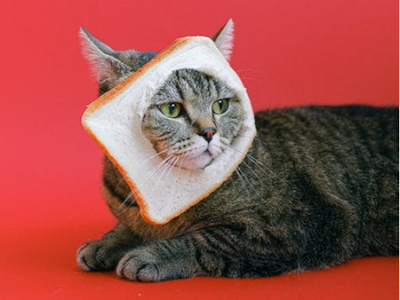
![Associated image for Best food for Ragdoll cats in the UK [Broken Down]](http://untamed.com/cdn/shop/articles/featured_best_food_for_ragdoll_cats_uk_400x300_crop_center.jpg?v=1646818249)
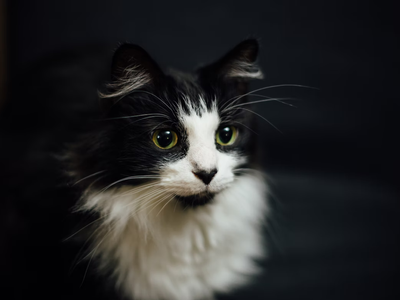
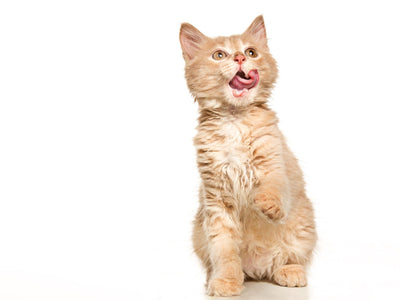
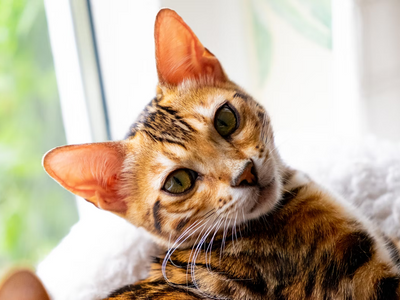
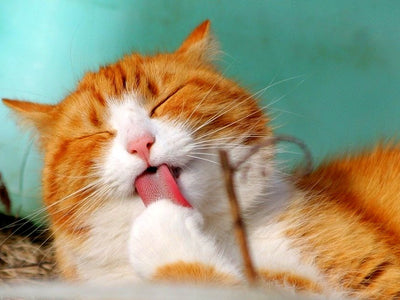
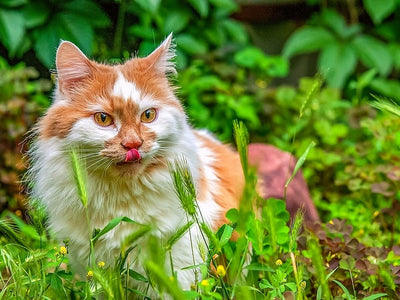
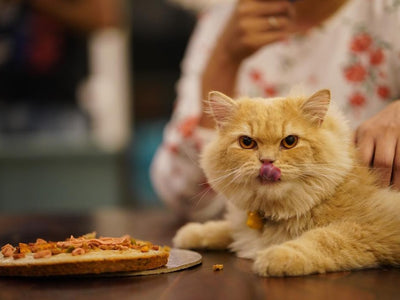
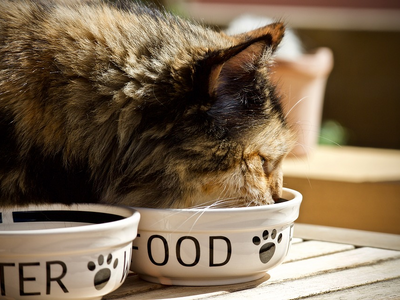
![Associated image for What human food can Sphynx cats eat? [Comprehensive list]](http://untamed.com/cdn/shop/articles/what_human_food_can_sphynx_cats_eat_Featured_400x300_crop_center.jpg?v=1648705074)
